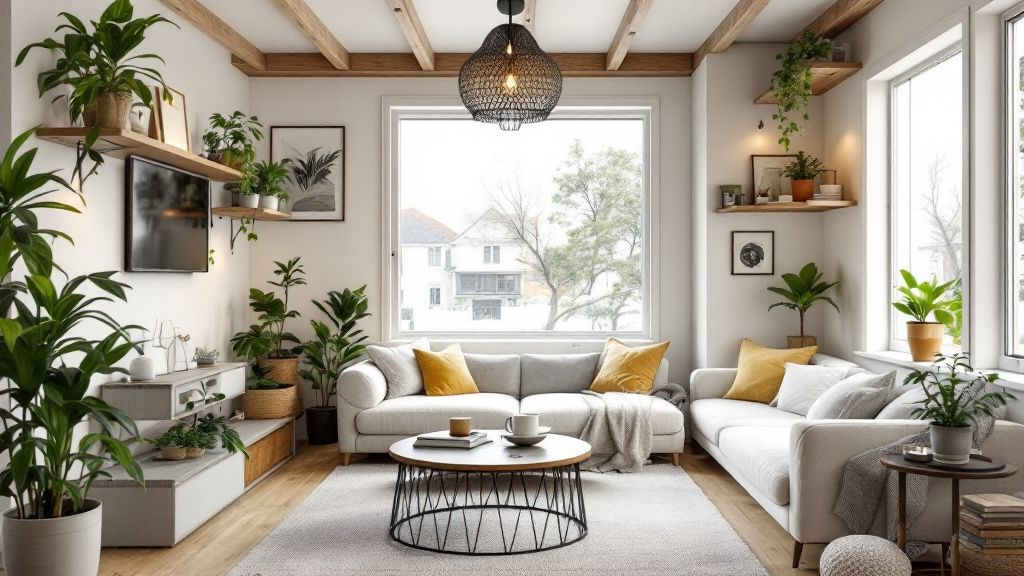These homes—the majority being more than 400 square feet—are easy to upkeep, have low electric bills, and offer a high level of customizability that can make you truly feel at home in your space.
That said, living in a tiny home can come across its fair share of challenges—one notable one being a lack of adequate space.
If you’re the type of person who gets quite sentimental and hoards multiple things, then choosing to live in a tiny house will require a complete restructuring of your current mindset.
Hoarding too much stuff can severely cut back the benefits of living in a tiny home. It eliminates the comfort and peace provided by a cosy and minimalistic backdrop, instead shoving waste and excess all over your area.
No homeowner would like to live in a hoarder’s haven, most especially people with small homes. If you’re treading close to a hoarder’s lifestyle, you’ll need to fix the problem, and fast.
Unsure of how to carry out the disposal process yourself? Worry not! This article can guide you with seven practical and eco-friendly rubbish removal tips specific to tiny homeowners.
Let’s jump straight into it.
1. Compost organic waste
Tiny home living is not just a matter of maximising a cosy space, it’s a movement.
Given the reduced space in a tiny home, you’ll need to move away from a life of indulgence and wastefulness and instead embrace sustainability and minimalism.
There are many ways you can achieve this inside the house. But an easy and achievable method that tiny homeowners can employ as soon as today is using kitchen scraps and yard debris as composting material for their outdoor garden.
Reusing leftover scraps like fruit peels, coffee grounds, and crushed egg shells as compost is a good way to improve your yard’s soil health while simultaneously curbing greenhouse gas emissions. Yard scraps like shredded leaves and grass clippings also make for good composting material.
Furthermore, composting also acts as a natural substitute for pesticides and fertilisers. This can help keep the soil and plants healthy for years to come.
Composting your own natural byproducts is also a dollar voted against supporting corporations that contribute to worsening health and environmental factors through the harmful chemicals found in these pesticides.
As such, if you truly want to reduce your carbon footprint, consider recycling organic matter by composting them. Oftentimes, they work just as effectively as store bought and commercial-grade products.
2. Hire rubbish removal services
Letting strangers into your small home may feel stuffy and intrusive, but trust us: it’s a step towards a more sustainable lifestyle. This is especially true if your clutter-filled home is in dire need of a cleanup.
For one, rubbish removal services employ a high standard of environmental responsibility. They don’t just pack all your rubbish in one bin, haul it to the landfill, and move on with their day. They identify and sort your rubbish properly, segregating it conscientiously to minimise environmental impact.
Besides that, hiring these cleaning services also reduces logistical effort on your part. You don’t have to engage in back-breaking work if you don’t want to. Instead, they do all the lifting for you, giving you ample time and space to take it easy.
The best part is that many rubbish removal services offer competitive pricing and customised cleaning options. So be sure to scour around your local area and find the best one for the job.
3. Put up designated sorting bins
Putting up sorting bins throughout the house is a good way to streamline the sorting process.
You should have three or four bins to start.
One should be for general waste products. Another should be for plastic bottles, plastics, and paper that are recyclable. The third one can be for organic waste to be used for compost, while the fourth one can be for reusable things like glass jars.
By sorting out your trash, you’re making it easier for yourself to recycle, reuse, and compost—all of which are generally good practices to uphold in Australia and around the world.
Furthermore, you’re also making it easier for yourself to sort out rubbish collection day, or if you want to bring your items to a recycling centre yourself.
4. Repurpose and recycle old things

Natural resources are finite and often non-renewable. As such, you should strive to reduce the amount of waste you’re putting in landfills as much as possible.
Besides avoiding one-use items, you can reuse and recycle resources you already own to breathe new life into them.
For instance, you can make a DIY project with old plastic bottles and turn them into pots and planters. Alternatively, you can use an old shirt and transform it into a rag.
The creative potential of repurposing old things is near-infinite—and if you have a heart for arts and crafts, this can be a fun pastime too to instil some flair in your home’s interior.
Recycling old items makes you more sustainable and helps conserve the earth’s limited resources. It also keeps you from buying new things for singular purposes, which may contribute to turning your place into a hoarder’s house.
5. Avoid using one-use plastics
The best way to deal with rubbish is to not have any of it in the first place.
While the prospect of rubbish-free living may feel impossible while participating in society, you can absolutely do your part in minimising your waste consumption. And the best way to do that is by avoiding single-use plastics.
As small and lightweight plastics can be, these packaging can take hundreds—if not thousands—of years to decompose. They’re major contributors to environmental harm, often ending up in natural landscapes like the ocean and biodiverse areas.
These plastics are not only unsightly, they also cause great health problems to animals and humans. It’s not uncommon for humans to consume animals that have millions of microplastic particles in them, for instance.
And the health repercussions of eating microplastics in food can cause great harm, to say the least.
6. Donate or sell unused items
If you’ve lived in your tiny home for quite a while now, you’re bound to have some items that you no longer use. Whether it’s clothes that haven’t seen the light of day or a book set that you’ve finished reading ages ago, these items do nothing but provide clutter to your home.
Instead of hoarding them for who-knows-how-long, consider flipping them or donating them instead. This is a win-win situation as you get to free up your home’s space while giving it to someone new who’ll value it instead.
If you sell them, you can even earn a quick buck for your efforts. Not a bad deal at all!
7. Replace eco-friendly alternatives
If it’s time for you to get a new bag, a new form of transportation, cleaning products, or anything along those lines, consider getting products from businesses that support sustainable and ethical practices.
As mentioned earlier, living in a tiny house is best done with eco-consciousness in mind. Your lifestyle should be centred around good environmental practices and enhanced responsibility towards your environment.
So whenever you plan on purchasing something, consider getting natural or biodegradable versions of the product. Buy a bike or EV instead of a gas guzzler. Support vegan soaps and shampoo products. Buy bags that don’t have plastic materials in them.
While your actions are small, they matter in helping increase awareness towards sustainability. So don’t overlook these trivial things in your tiny house.






Share: